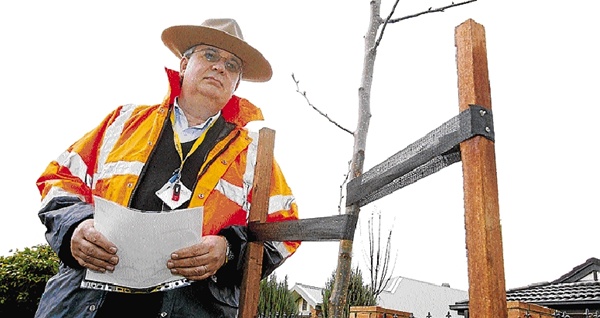MELTON residents have slammed the council’s decision to plant introduced tree species along Centenary Avenue.
Ralf Schumann said residents were surprised last month to find the council had introduced a series of ornamental pear trees between Coburns and Bulmans roads.
Aside from being more attractive, he said, native evergreen trees produced carbon dioxide all year, unlike foreign trees that are bare for months.
“Especially when CO2 emissions from heating is highest in winter, these foreign trees have no leaves to assimilate the extra carbon dioxide.
“At a time when Australians are told to reduce CO2 levels, is it not counter-productive to plant anything but evergreen native trees?” Mr Schumann said more than 80per cent of native vegetation in the Melton area had been cleared since European settlement.
Council operations manager Greg Wood said tree planting was completed in the Melton shopping and business district and on Centenary Avenue in May and June.
“The species of tree was selected in accordance with the council’s landscape guidelines that were adopted in 2010.”
Mr Wood said the guidelines allowed the use of both native and exotic tree species.
“The species planted in Centenary Avenue is an ornamental pear [and] has been planted across the municipality within a number of streetscapes.”
Melton Environment Group president Daryl Akers said while it was preferable to have native trees in the shire, it could also be a matter of personal taste.
“Personally, I prefer local indigenous trees to be planted, as they are more suited to the local climate but many people like exotic species.”
Last Sunday, Mr Akers and five other residents planted 250 plants, a mixture of trees, shrubs and wildflowers around the shire on National Tree Day.
“In trying to create a wildlife corridor we mainly planted blue box trees, types of gum trees and others native to the area – mainly wattles, tea-trees and bottle-brushes – to protect the banks of Arnolds Creek from erosion.
“It was pleasing to see wood ducks investigating nestboxes at Arnolds Creek that Coburns Primary School students painted this year.”







